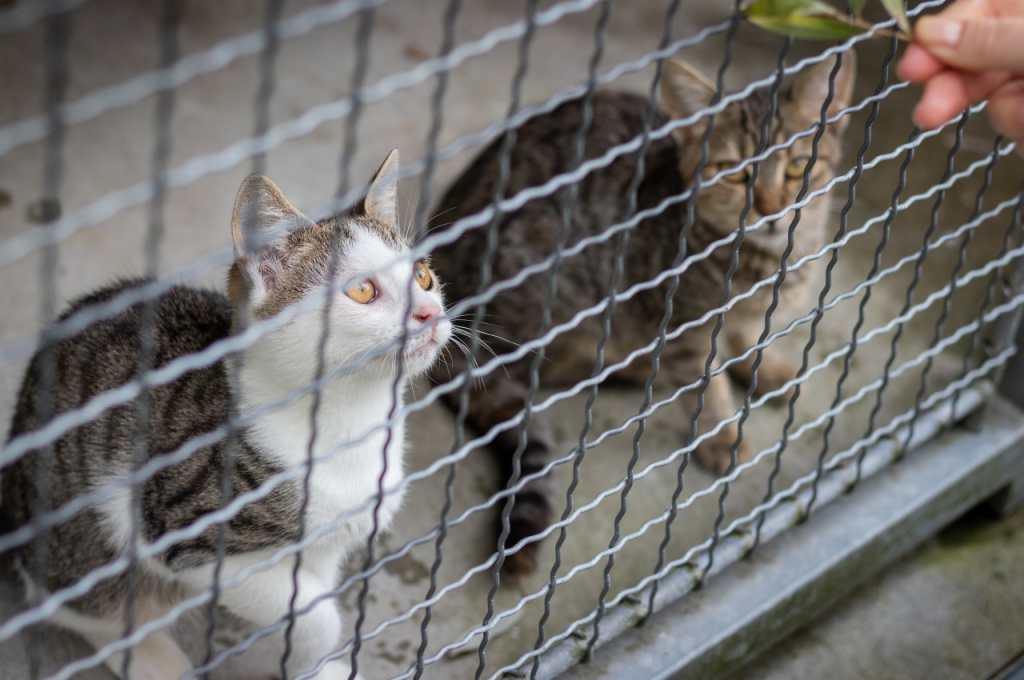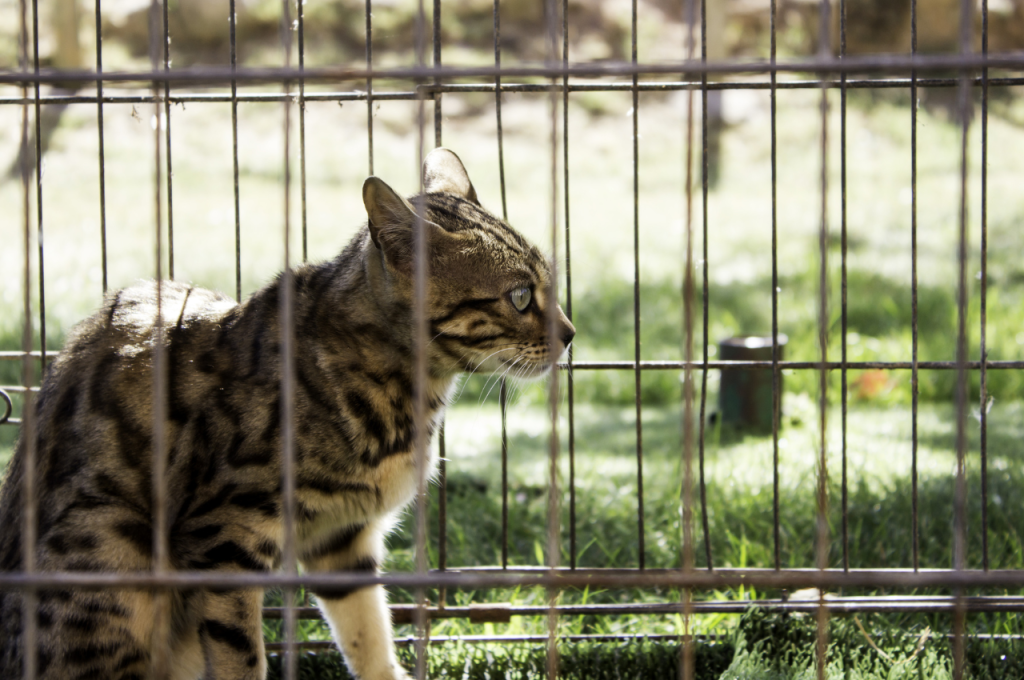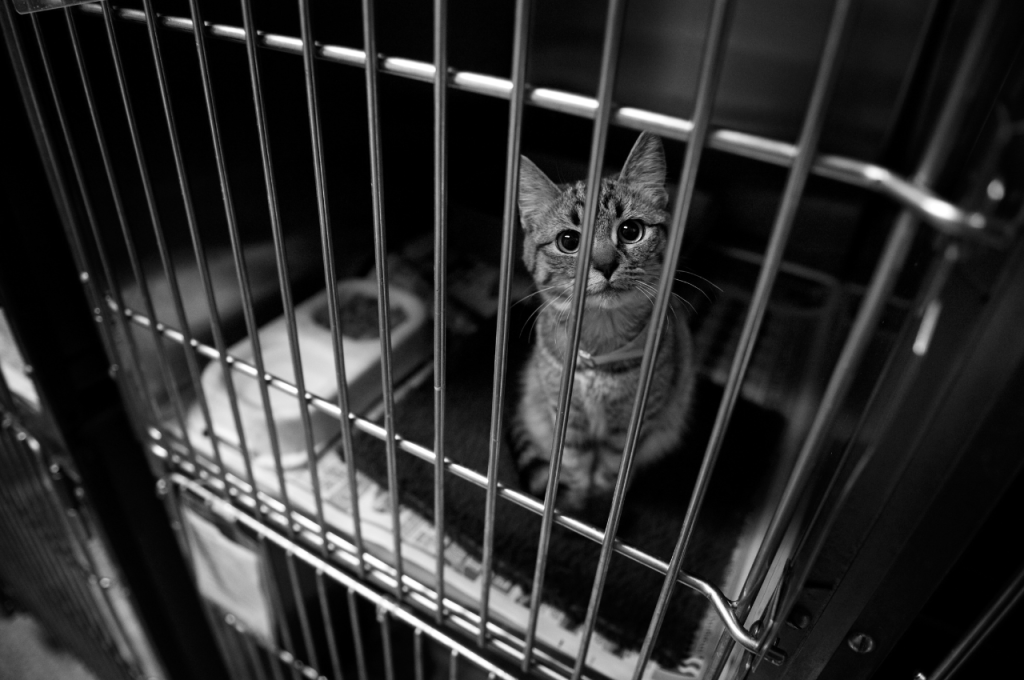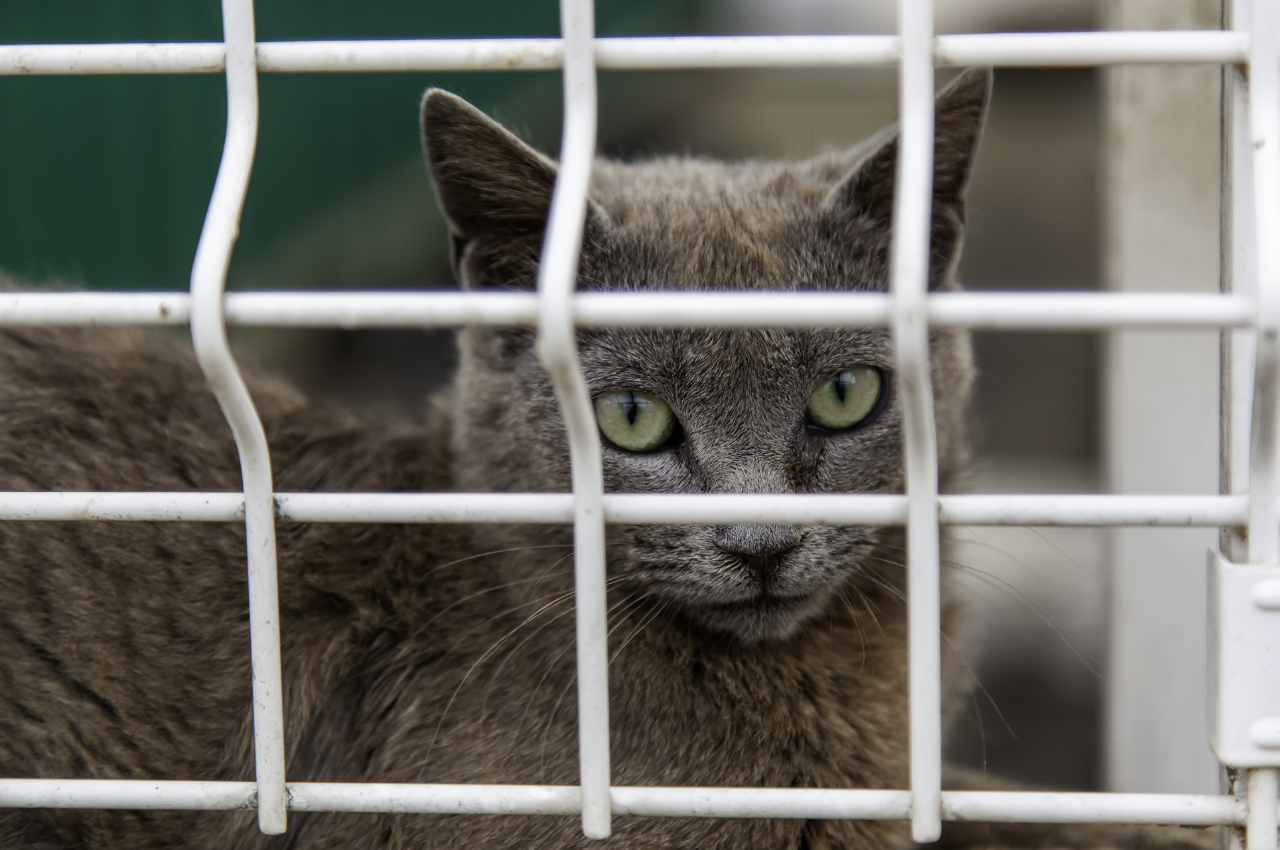To keep a caged cat happy, provide toys, climbing structures, hiding spots, and interactive playtime daily. Additionally, ensure the cage is spacious, clean, and located in a stimulating environment with natural light and visual stimulation.
Cats also benefit from mental stimulation, so consider puzzle feeders and rotating toys to keep them engaged and entertained. It’s important to spend quality time with your cat to provide companionship and prevent boredom. Regularly rotate and refresh their toys to keep things interesting and engaging. Lastly, consider adding a window perch or bird feeder outside the window to provide visual entertainment. By following these tips, you can ensure your caged cat remains happy and content.
The Importance of Feline Happiness
Cats are unique creatures that thrive on happiness and contentment. Ensuring your caged cat’s emotional well-being is crucial for their overall health and quality of life.

Link Between Wellbeing and Environment
- A cat’s environment directly impacts their mental state. Creating a stimulating and enriching living space can significantly boost your feline friend’s happiness.
- Incorporating toys and scratching posts, providing cozy resting spots, and ensuring access to natural light can all contribute to a happier cat.
Consequences of Neglected Emotional Health
Neglecting your caged cat’s emotional needs can lead to stress and behavioral issues. Boredom and loneliness may result in destructive behavior and health problems. Regular interaction, playtime, and mental stimulation are essential for preventing emotional neglect and promoting a happy, well-adjusted cat.
Creating a Stimulating Habitat
To keep a caged cat happy, create a stimulating habitat with plenty of toys, scratching posts, and climbing structures. Rotate the toys regularly to keep your cat engaged and provide opportunities for exercise and mental stimulation. Consider adding a window perch to provide entertainment and outdoor views.
Creating a Stimulating Habitat for your caged cat is essential to keep them happy and healthy. As much as possible, you want to simulate their natural environment to help them adjust to their new home. One way to do this is to provide them with varied perches and hideaways, interactive toys and puzzles, and other forms of entertainment.
Varied Perches and Hideaways
Cats love to climb and explore, so providing them with various perches and hiding places can make their environment more stimulating. You can install cat trees, shelves, or window perches, giving them a high vantage point where they can observe their surroundings. You can also provide them with cozy hiding spots such as covered beds, boxes, or tunnels where they can take naps or play hide-and-seek.
Interactive Toys and Puzzles
Cats love to play, and interactive toys and puzzles can keep them mentally and physically stimulated. You can provide them with toys that encourage hunting and chasing, such as wand toys, puzzle feeders, and laser pointers. You can also provide them with scratching posts and toys that encourage them to climb and jump. Toys and puzzles should be rotated regularly to keep your cat interested, and you should always supervise them while playing to ensure their safety.
In conclusion, creating a stimulating habitat for your caged cat is crucial to their well-being. By providing them with varied perches and hideaways and interactive toys and puzzles, you can keep them happy, healthy, and mentally stimulated.
The Role of Diet in Feline Contentment
To keep a caged cat happy, the role of diet is crucial. Providing high-quality cat food, enriching the diet with treats and interactive feeders, and ensuring access to fresh water is key to feline contentment. A balanced and stimulating diet contributes significantly to a cat’s overall well-being and happiness.
As a pet parent, it’s your responsibility to ensure that your caged cat is happy and healthy. While providing them with a comfortable living space and engaging toys are essential, the role of a balanced diet in their contentment cannot be ignored. In this section, we’ll discuss the importance of a healthy diet, the difference between scheduled feeding and free feeding, and how you can ensure that your feline friend is getting the nutrients they need to stay happy and healthy.
Balanced Nutrition
Cats are obligate carnivores, which means they require meat in their diet to thrive. A diet rich in protein, fat, and amino acids is essential for their overall health and well-being. Your cat’s food should contain all the necessary nutrients, including vitamins and minerals, to ensure that they’re getting a balanced diet. You can consult with your veterinarian to determine the best type of food and feeding routine for your cat based on their age, weight, and health status.
Scheduled Feeding vs. Free Feeding
Scheduled feeding involves providing your cat with a specific amount of food at scheduled times throughout the day. This method ensures that your cat is getting the right amount of nutrients and helps prevent overeating. On the other hand, free feeding involves leaving food out all day, allowing your cat to eat whenever they want. While this method may be convenient, it can lead to overeating and obesity, which can have negative effects on your cat’s health.
How to Ensure Your Cat is Getting The Right Nutrients
In addition to providing your cat with a balanced diet, you can also supplement their food with treats and supplements. However, it’s important to ensure that these supplements are appropriate for your cat and that you’re not overfeeding them. You can also monitor your cat’s weight and overall health to ensure that they’re getting the right amount of nutrients. If you notice any changes in their behavior or appetite, it’s best to consult with your veterinarian to rule out any underlying health issues.

In conclusion, providing your caged cat with a balanced diet is crucial for their contentment and overall health. By following the tips and guidelines outlined in this section, you can ensure that your feline friend is getting all the nutrients they need to stay happy, healthy, and active.
Implementing a Routine for Your Caged Cat
To keep your caged cat happy, implementing a routine is essential. Provide regular feeding times, interactive play sessions, and a comfortable environment to ensure your feline friend stays content and stimulated. Regular interaction and enrichment activities are key to maintaining your caged cat’s well-being.
Consistency in Daily Activities
- Establish consistent feeding and cleaning schedules for your caged cat.
- Place food and water in the same spot daily for familiarity.
- Keep the cage in a quiet area to provide a sense of security.
Training and Playtime Scheduling
- Set aside time each day for interactive play sessions.
- Include toys and activities that stimulate your cat’s mind.
- Introduce training exercises to keep your cat engaged and active.
Bonding with Your Caged Cat
Bonding with your caged cat is essential for their happiness and well-being. Quality time and affection play a crucial role in strengthening your bond with your feline friend. Understanding their communication cues can help you connect on a deeper level.
Quality Time and Affection
- Spend quality time with your cat to show them you care.
- Engage in play sessions to keep them entertained and active.
- Use interactive toys to stimulate their mind.
- Offer snuggles and cuddles to show your affection.
Understanding Feline Communication
- Observe your cat’s body language and vocalizations.
- Respond to their needs and emotions accordingly.
- Purring indicates contentment and happiness.
- Meowing can signify hunger, attention, or discomfort.
Enriching The Vertical Space
Elevate your caged cat’s happiness by enriching the vertical space. Install shelves, cat trees, and vertical scratching posts to encourage climbing and exploration. Providing elevated perches allows your feline friend to observe their surroundings, promoting mental stimulation and physical activity. Enriching the Vertical Space is crucial in keeping a caged cat happy. As natural climbers, cats need an environment that allows them to explore and exercise their climbing instincts. Providing climbing options is the best way to create a vertical playground for your caged cat.
Climbing Options
There are numerous climbing options available in the market. You can either buy them or make your own. When choosing a climbing option, ensure it is sturdy and stable enough to hold your cat’s weight. A few examples of climbing options include:
- Vertical scratching posts
- Wall-mounted shelves and perches
- Cat trees and towers
Safe Heights for Observation
Cats love to observe their surroundings from a safe height. Ensure the climbing option you choose provides a safe height for observation. Keep in mind that cats can jump down from heights of up to six times their body length, so the climbing option should not be too high. A safe height for observation is around 1.5 to 2 meters from the ground. Enriching the Vertical Space is essential for your caged cat’s mental and physical well-being. Providing climbing options and safe heights for observation will help keep your cat happy and entertained.
Remember to choose sturdy and stable climbing options and provide a safe height for observation. By following these simple tips, you can create a vertical playground that your cat will love.
Hygiene and Health Maintenance
Maintaining proper hygiene and health for a caged cat is essential to ensure its happiness. By regularly cleaning the cage, providing fresh water and a balanced diet, offering toys and mental stimulation, and giving attention and love, you can keep your feline friend content and healthy. Cats are naturally clean animals that spend a significant amount of time grooming themselves. However, caged cats require additional attention to maintain their hygiene and health. As a responsible pet owner, it is essential to keep the living space clean and ensure regular veterinary check-ups.
Cleanliness of The Living Space
The cleanliness of the living space is crucial for the health and happiness of your caged cat. A dirty living space can lead to various health problems, such as infections and respiratory issues. To ensure a clean living space, follow these simple steps:
- Remove any uneaten food or litter daily to prevent the growth of bacteria.
- Clean the litter box daily and replace litter once a week.
- Wash food and water bowls daily with soap and hot water.
- Wipe down the cage with a damp cloth or pet-safe disinfectant weekly.
- Provide toys and scratching posts to prevent boredom and encourage exercise.
Regular Veterinary Check-ups
Regular veterinary check-ups are essential to maintain the health of your caged cat. Even if your cat appears healthy, routine check-ups can detect underlying health problems that may not be visible to the naked eye. During the check-up, the veterinarian will perform a physical exam, check for parasites, and administer any necessary vaccinations. It is recommended to schedule a check-up at least once a year, or more frequently for older cats or those with pre-existing health conditions.

In conclusion, maintaining the hygiene and health of your caged cat is crucial for their happiness and well-being. By following these simple steps and providing your cat with a clean living space and regular veterinary check-ups, you can ensure they live a long and healthy life.
Conclusion
Keeping a caged cat happy requires attention and care. By providing toys, social interaction, and a stimulating environment, you can ensure your feline friend’s well-being. Regular playtime, comfortable bedding, and a balanced diet are essential for a contented indoor cat. Prioritizing your cat’s happiness is key to a fulfilling companionship.
